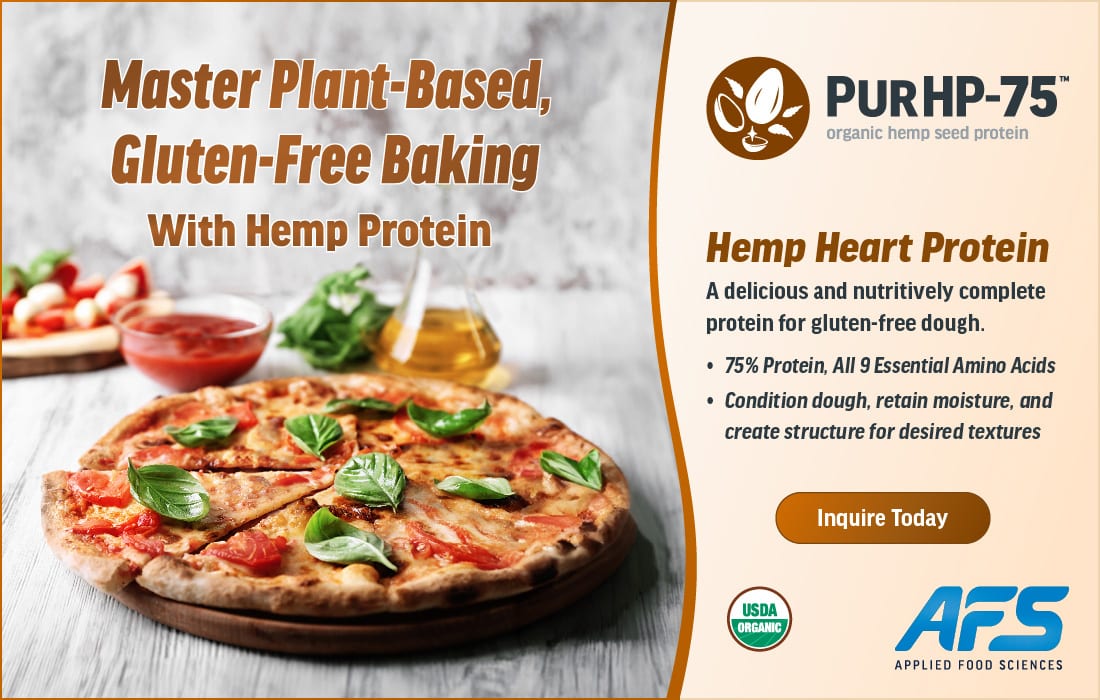AUGUST 2023

Protein
Technologies
Protein
by the Drink
An expanded portfolio of ingredients is propelling better-for-you beverage innovations.
Protein beverages are booming as active consumers seek quick and flavorful sources of the important nutrient. Video courtesy of Getty Images / sibway
Consumers are still focusing on protein as a daily need and increasingly turning to beverage formats for this important macronutrient. To put it in perspective, a just-released report by Straits Research forecasts global sales in the Ready-to-Drink (RTD) protein beverage market to reach $2.65 billion by 2030, following a CAGR of 8.1%.
Protein is a vital nutrient, necessary not only for maintaining muscles and other tissues but for production of key components of the body’s operating systems. Virtually every metabolic function relies on the protein structures known as enzymes. For decades consumers were reminded that daily needs in the US and other developed countries are rarely unmet.
By Bridgette Love-Shaw, Contributing Editor, with David Feder, RDN, Executive Editor-Technical
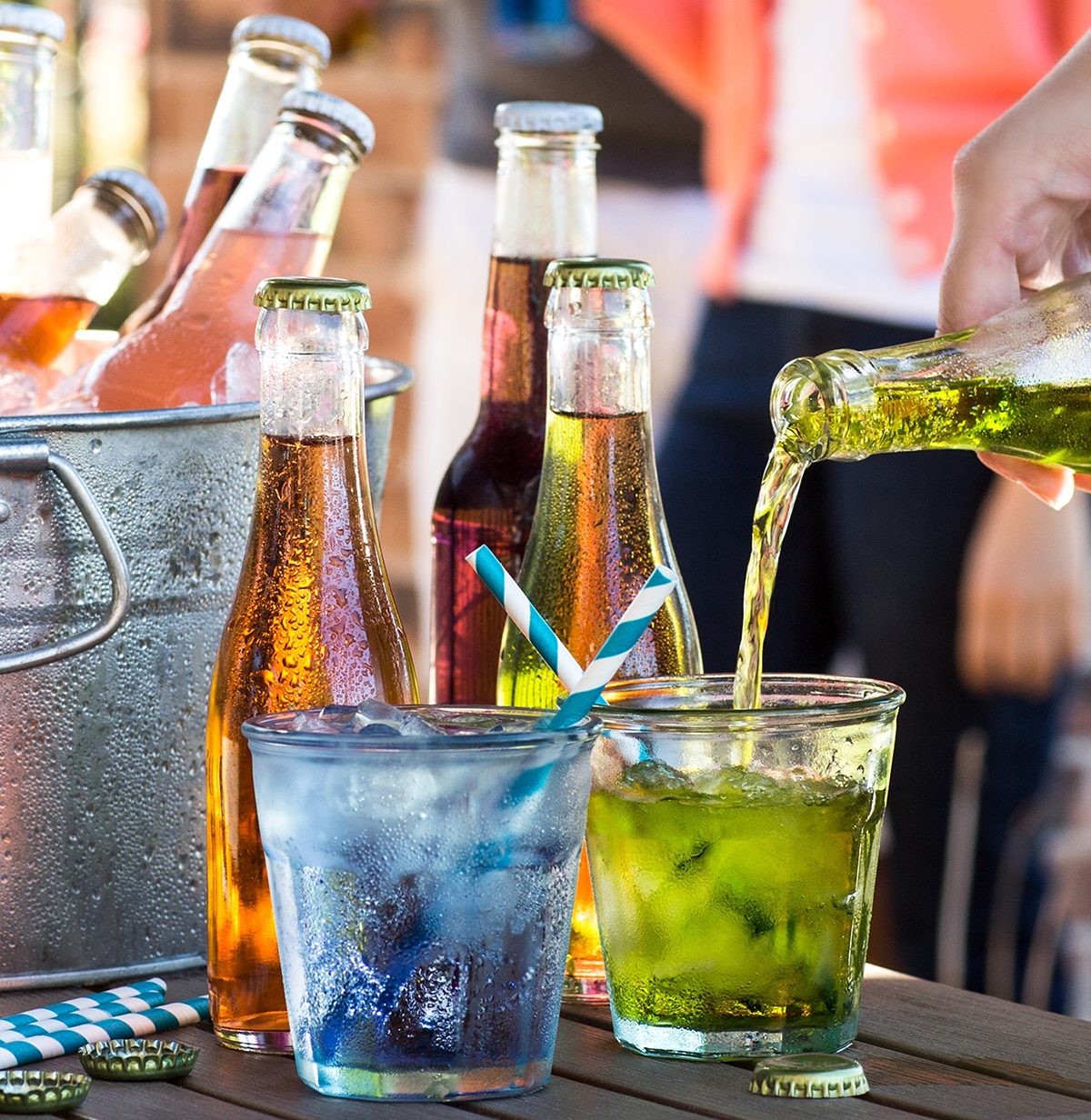
However, a “protein boom” began in the 1990s as research revealed certain benefits to increasing protein in the diet for some consumers, especially athletic and otherwise active ones. Protein’s high satiety also brought it into focus for those consumers concerned with weight management.
As with any trend with such long growth, differentiation is vital. The world of protein has some new applications in flavor, texture, and functionality in beverages. Currently, the most popular proteins used in beverage applications are whey protein concentrate, whey protein isolate, whey protein hydrolysate, casein, soy protein, pea protein and brown rice protein.
The Milky Way
Whey protein, a watery byproduct of cheese production, has become one of the most popular sources of added protein. This is especially true of dairy-based sport and sport recovery beverages, as studies have shown it helps stimulate muscle tissue synthesis within only a few hours of consumption.
Whey is commonly used in baked foods, such as cakes, breads, and crackers, as well as in many infant formulas and liquid meal replacers.
Ingredient technology has boosted the ability to enhance clear still and carbonated beverages with protein, overcoming the challenge of clouding and separating. Photo courtesy of: Kerry Ingredients, plc
Sport Nuts
While milk alternatives once were the near-exclusive territory of soy and rice, almond milk enjoyed a big surge in availability and popularity a generation ago and today it is hard to find a nut, grain, or seed that has not been used to craft an alternative to dairy milk. In fact, almond milk has become a chief rival of soy milk. The popularity of these dairy alternatives has been moving into the protein beverage arena for several years and there remains a lot of unexplored opportunity for protein beverage makers. While there is a challenge—in that many of these nut and seed milks have lower total protein and a less complete balance of amino acids compared to soy, pea, and especially dairy protein—in many cases, they can be enhanced with same-source protein isolates.
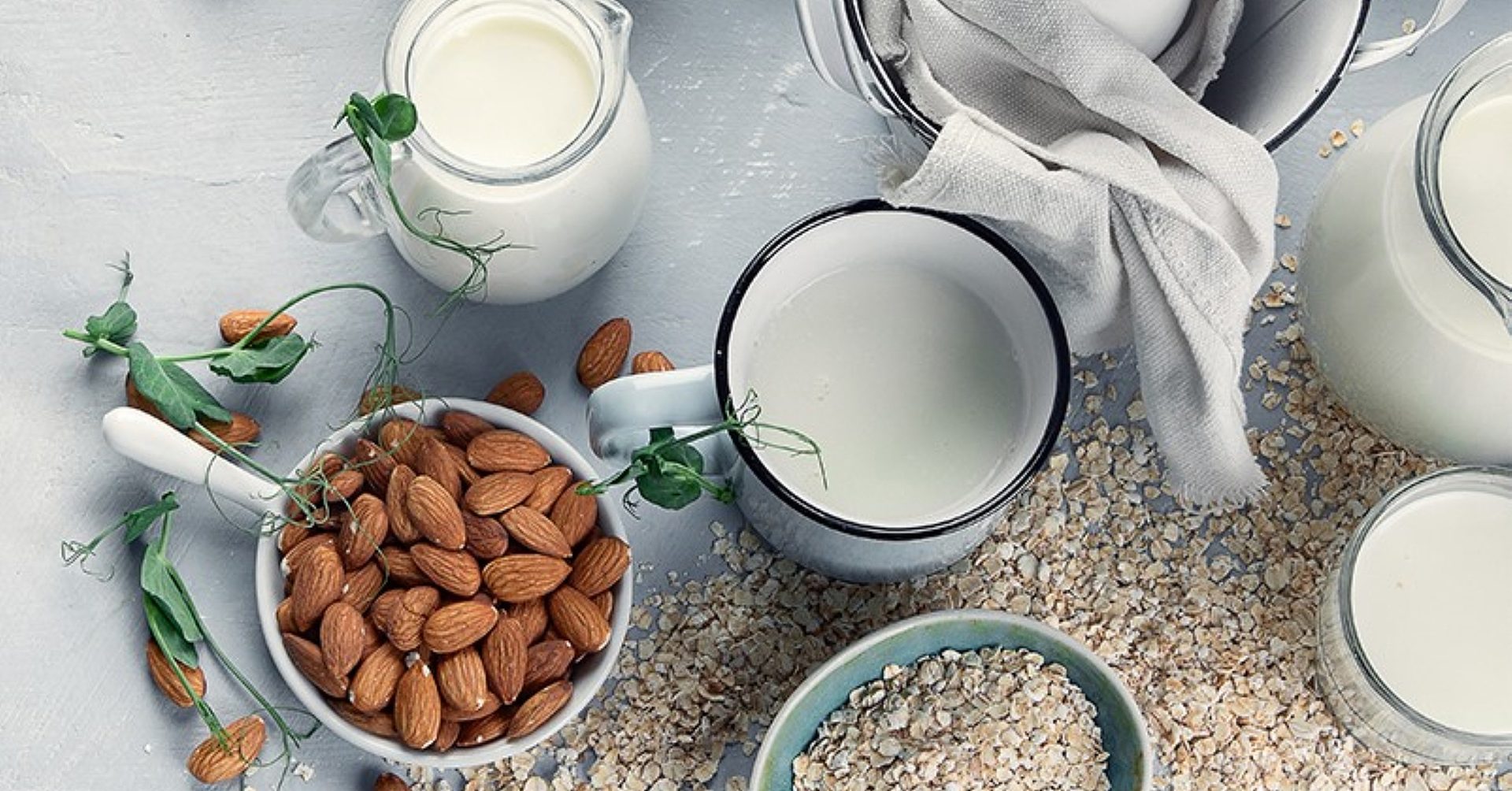
Hydrocolloids such as gums and fibers work to ameliorate chalky or gritty textures common to many plant protein concentrates used in dairy and dairy analog drinks. Photo courtesy of: CP Kelco, Inc.
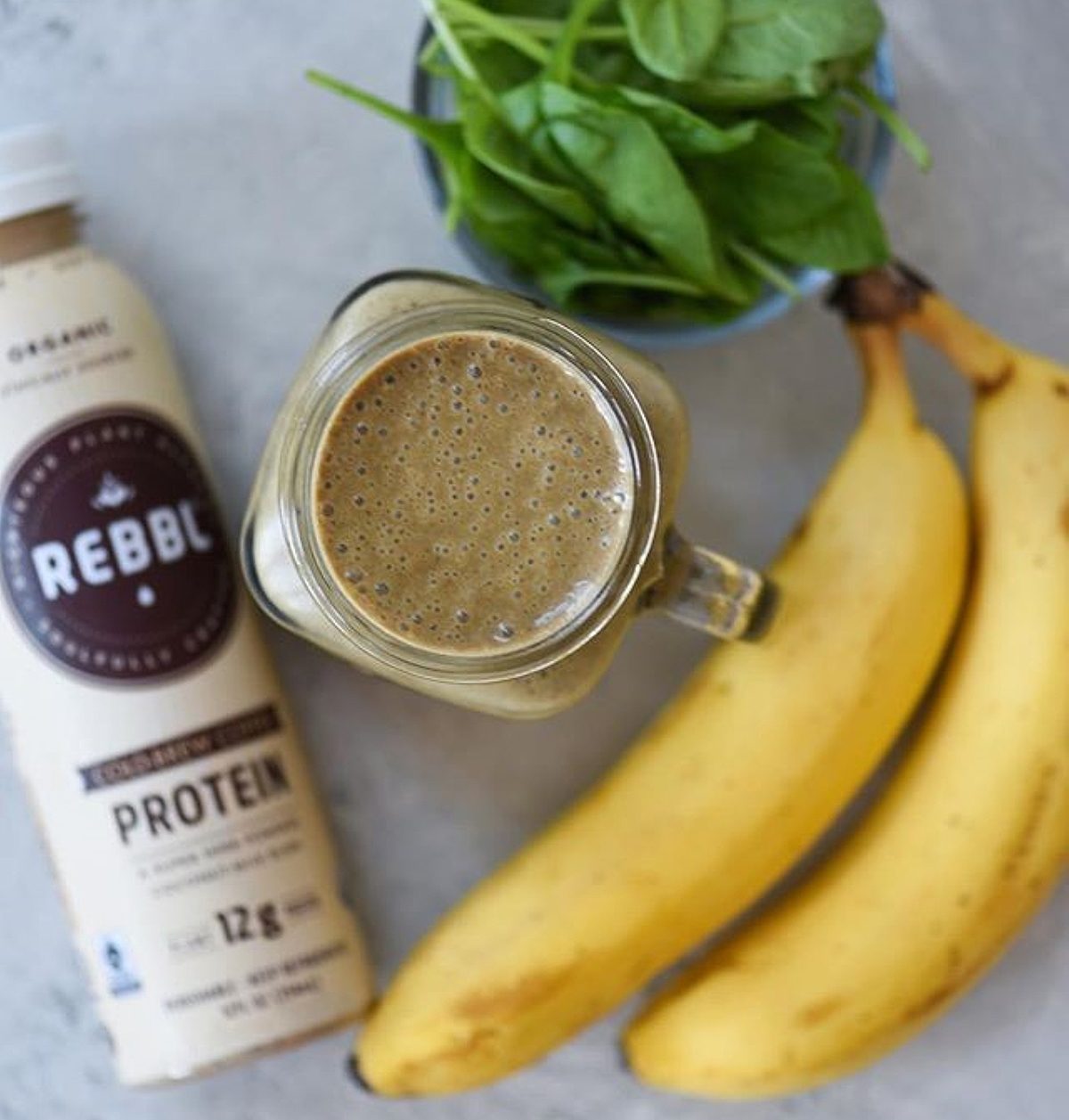
Rich in vitamins and minerals, its high level of branched-chain amino acids (BCAAs) is what makes it preferred for the latter two. This is largely due to its rich leucine content. Leucine is an important amino acid that the body uses in signaling muscle protein synthesis.
Whey typically comes in three forms, concentrate, isolate, and hydrolysate. All are highly bioavailable, easily digested and metabolized rapidly.
Whey isolate is the form that has been stripped of most of its lipid and lactose components to a level of at least 90% protein. This gives it a low viscosity that makes it the preferred protein option for many beverage formulations.
The breakdown of isolate protein into di- and tripeptides yields whey hydrolysate. Isolates and hydrolysates are much more rapidly absorbed than whole proteins. However, the hydrolysate of whey has broth-like flavor notes and can also give off bitter back notes. Overall, beverage processors tend to prefer whey protein isolate, which has a cleaner flavor that has been described as milk-like, and a faint aftertaste of ripe fruit.
The health halo of protein has expanded beyond exercise and energy to such critical areas as satiety and weight management. Photo courtesy of: REBBL, Inc.
Skin in the Game
While protein beverages traditionally targeted energy, muscle health, and satiety, one highly popular protein ingredient—collagen—has segued recently into beverages for a different reason: beauty from within. Collagen has been appearing especially often in clear beverages. Growth in this area has been decent, with Fact.MR market research reporting only last month that the collagen-infused water market should close 2023 at almost $60 million and is projected to grow at a CAGR of 3.9% at least until 2033.
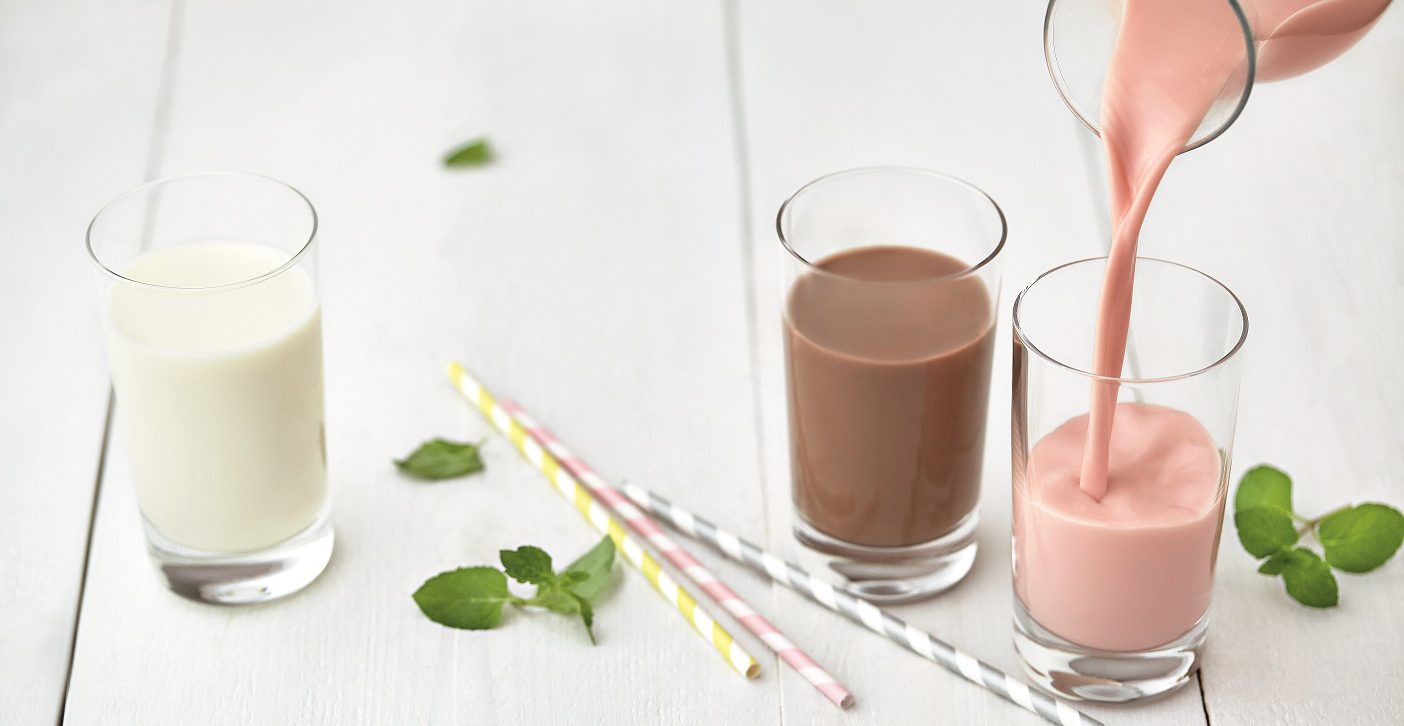
Newer sources of plant protein, such as sunflower protein, are prized for being non-GMO, hypoallergenic, natural, and sustainable. Photo courtesy of: Hydrosol, GmbH

Casein is another dairy protein used in beverages, especially sports and energy drinks. As a major component of milk, cheese, and yogurt, it also is commonly added to ice cream, coffee creamers, protein powders, shakes, infant formula, and other products both to enhance the protein profile and to control texture.
Casein is a popular ingredient in recovery beverages for athletes because it contains all nine essential amino acids and is slow-digesting, much more so than whey. This proffers another advantage, that of having very high satiety. Casein has a bland flavor profile and a texture that is smoother and creamier than whey. It makes up the majority of the protein in milk—about 80%—yet it also is often more expensive than whey. Moreover, whey tends to mix and blend much better in formulation than casein.
Rice and Beans
Soy protein is made from soybean meal that has been de-hulled and de-fatted. It’s the most common form of plant protein in use, and its history as an animal protein replacer goes back centuries. In beverages, it’s a veritable workhorse among milk alternatives, sports and energy shakes, protein powders, and infant formulas. Soy protein has a nutty profile but can also deliver a beany or bitter aftertaste and, a chalky texture if the beverage is not formulated correctly.
Protein beverages rely on more than just the protein; flavor maskers and enhancers play a key role in countering plant protein’s bitter back notes. Photo courtesy of: FlavorHealth, Inc.
Creamy Smooth
Starches and gums are commonly used when developing dairy or dairy analog-based protein beverages. These hydrocolloids help with the suspension of protein in the beverage as well as the mouthfeel. If using only water or other clear liquid with a protein powder, a thickening starch or gum can deliver the desired mouthfeel of a smooth and creamy shake.
One of the fastest growing plant protein sources is the chickpea. It has many advantages in beverages. As a dairy milk alternative, it has a high protein profile, comparable to soy and cow’s milk, and is rich in other nutrients. Recent technological advances have allowed for the removal of bitter and beany flavors and lent the protein an enhanced creaminess that boosts its appeal for beverages such as shakes and functional milks.
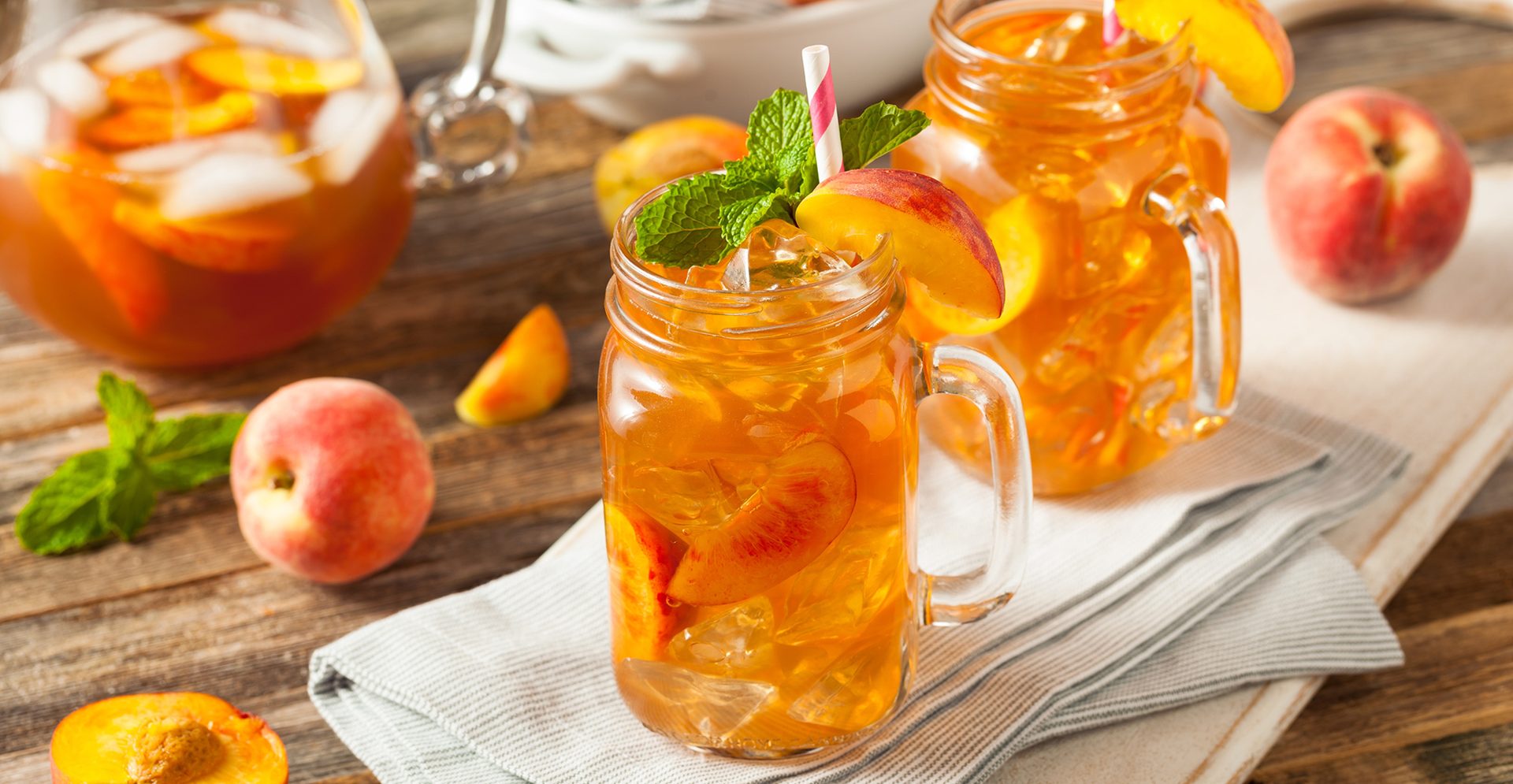
Natural flavor modifiers are often critical in balancing fruit flavors with protein ingredients that are either neutral or astringent. Photo courtesy of: Bartek Ingredients, Inc.
Although pure, milk proteins are allergens and, of course, non-vegetarian. Developers seeking alternative often turn to pea or brown rice proteins. In addition to being vegan and allergen-free, brown rice protein is gluten-free. A slowly digested protein, with a full complement of amino acids, it’s a good option for sports beverages brown rice protein. Most forms retain good levels of fiber and B vitamins. Brown rice protein has a slightly sweet flavor but can contribute a bitter aftertaste in some formulations. It also has a chalky texture and low in lysine. But this is where pea protein can come in handy.
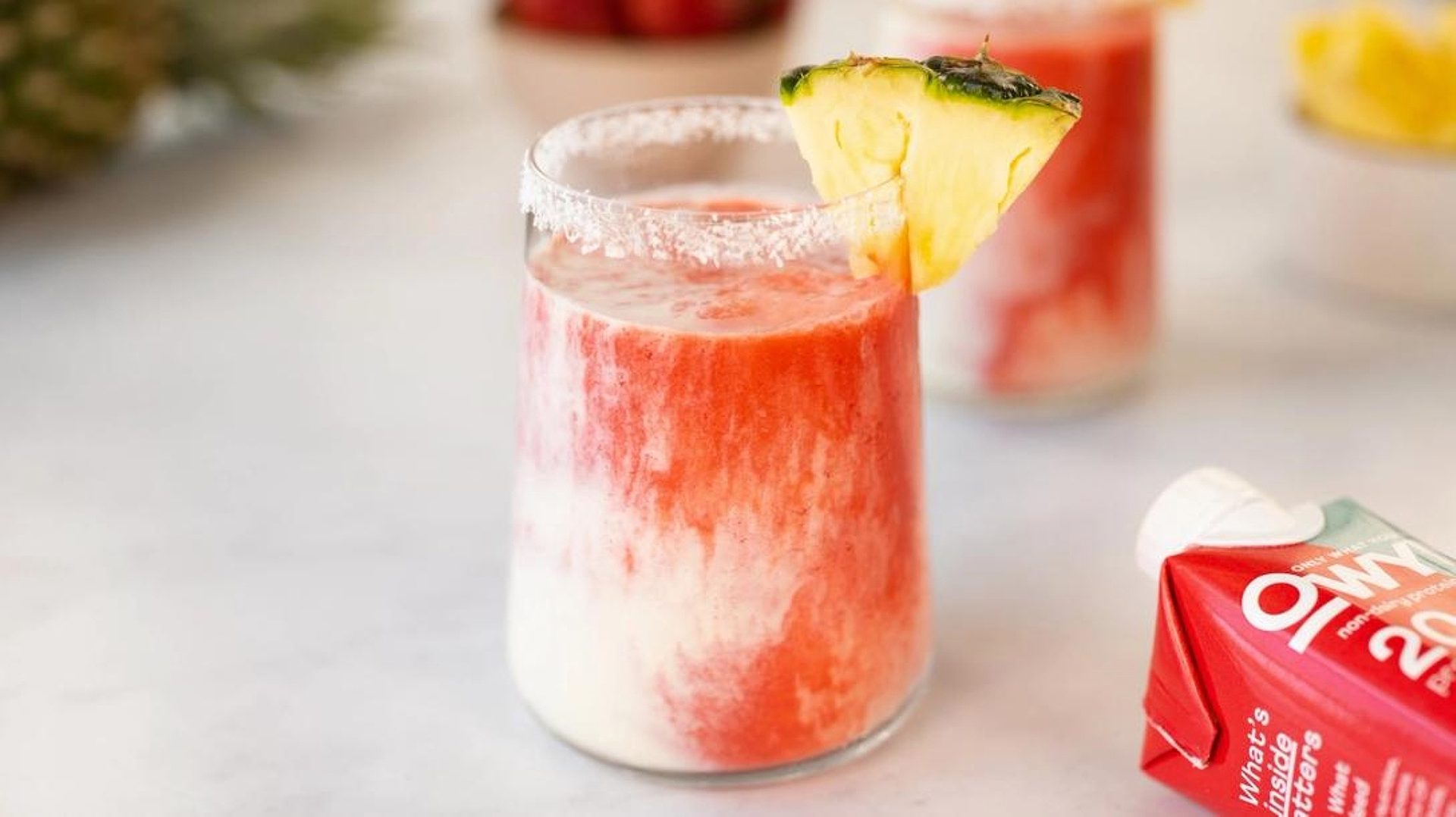
Protein beverage makers have amplified their creativity with new flavor combinations and textures to raise appeal beyond the traditional sport beverage platform. Photo courtesy of: OWYN/Only What You Need, Inc.
Quick Take: Protein Points
• Whey protein powder has a shelf life of 9-19 months, while plant-based proteins (because of their lack of milk) have a shelf life of 24 months.
• When developing RTD beverages, the heat process is extremely important so as not to risk denaturing proteins and causing them to clump and create off textures and flavors. Whey proteins should not exceed 140°C. Just as important as the pasteurization step is the packaging.
• Hydration and solubility of proteins are key factors to consider when developing protein-enhanced beverages.
• Pea protein has excellent functional properties such as solubility, water- and oil-holding capacity, emulsion ability, gelation, and viscosity. These attributes make pea protein a favored ingredient in the food and beverage industry.
—courtesy of FoodResearch Lab/Guires, Inc.
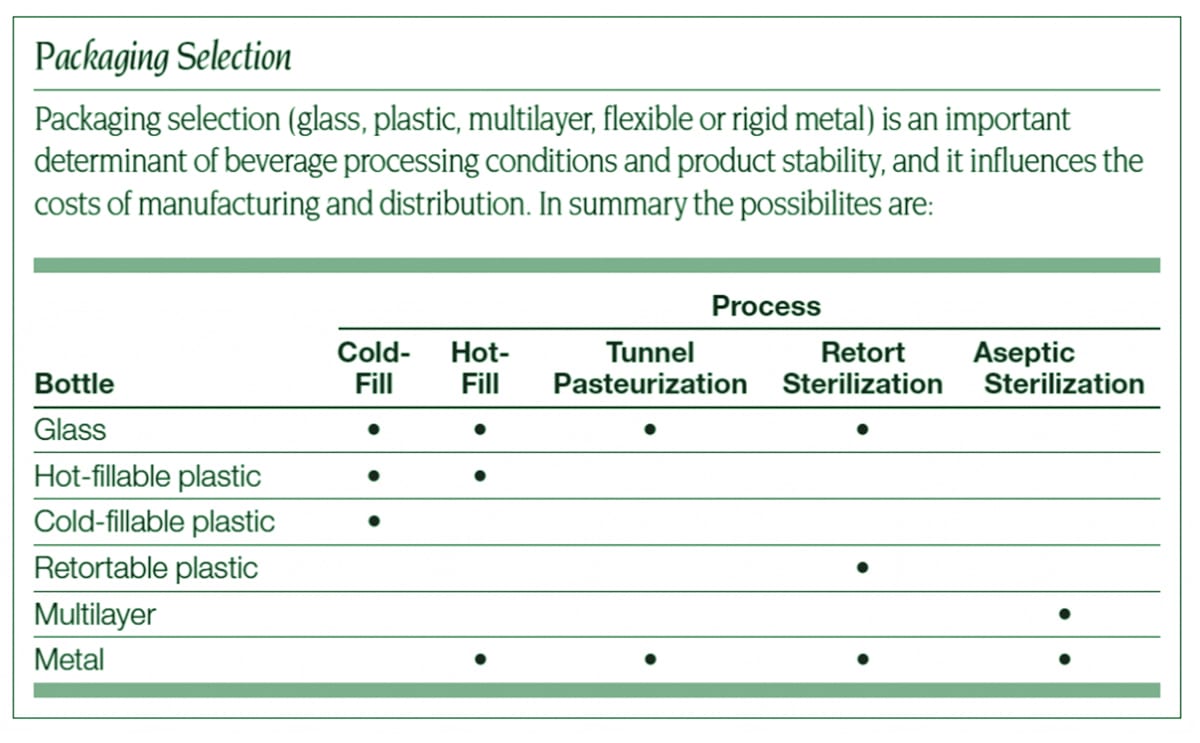
Pea protein is experiencing significant growth, largely due to the demand for plant-based products that are non-GMO and allergen-free. It’s extracted from split peas—typically the mild-flavored yellow peas—and is used in products such as meat alternatives, vegan cheeses, yogurts, milks and snack bars.
Pea protein is commonly used to boost protein content when developing products like nut milks. Pea protein has an astringent, grassy, earthy flavor and a chalky or gritty texture, and pea protein hydrolysates can even be noticeably bitter.
Chart courtesy of: FoodResearch Lab/Guires, Inc.
Seeing Clearly
Clear beverages, especially carbonated ones, were not typical carriers of protein until relatively recently, due to the propensity of protein to cloud and separate. But ingredient technology overcame those challenges and gave a considerable boost to the multibillion-dollar RTD sports beverage industry. In fact, according to Innova Market Research, some 90% of RTD sports drinks launched make protein claims.
Makers of carbonated protein beverages have commonly turned to whey protein hydrolysate. Usually carbonating protein creates foam and cloudiness, which are not desired in a carbonated drink. Whey hydrolysate avoids this. Whey protein hydrolysate allows beverage processors to add protein to carbonated drinks more easily and without the off appearance.
Developers of still waters and fruit-based drinks often turn to whey protein isolate because it has a milder, fruiter flavor profile and also remains clear. Mixing whey proteins with fruit juices may have some development issues due to the more acidic environment, however, so adding ingredients such as high-methoxyl pectin help to protect the protein at a low pH and extend shelf-life.
With beverages one of the more ready vehicles to use for boosting nutrition in the daily diet, often without excess calories, and health foremost in the mind of many consumers, the opportunities offered by beverages to act as vehicles for nutrients such as protein remain impressive. The variety and quality of RTD protein beverages can give the category plenty of room to grow in the near future. PF
Bridgette Love-Shaw is R&D Manager for product development company Victus Ars in Chicago. With degrees in chemistry and biology, as well as an MBA for good measure, she has nearly 20 years of experience in the food and beverage industry covering R&D in beverages, confections, bakery and ingredient development and manufacturing. She has specialized in fruit juices, teas, and electrolyte and protein beverages, as well as alcohol beverages. She can be reached at bridgette.love-shaw@victusars.com.
AUGUST 2023

